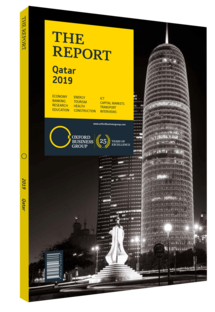Abdulla Nasser Turki Al Subaey, President, Civil Aviation Authority: Interview

Interview: Abdulla Nasser Turki Al Subaey
How has opening visa-free travel for 80 countries affected passenger traffic and allowed the country to mitigate the impact of regional airspace closure?
ABDULLA NASSER TURKI AL SUBAEY: This decision taken by the government has been very positive for Qatar’s overall economic development, and at the same time has put pressure on all aviation stakeholders to meet greater air traffic demands. Hamad International Airport (HIA) is reaching its full passenger capacity, and is expecting more for 2019. We are thus already preparing for HIA’s expansion, which is scheduled to begin construction in the second half of 2019. The expansion will increase our passenger capacity from 30m to more than 53m passengers per year, and we are confident it will continue to provide a unique experience to all visitors.
In addition to this, we are increasing our air service and bilateral agreements with other countries in order to create more traffic rights and routes, which will increase passenger numbers through HIA. Since June 2017 we have established a deeper collaboration with the International Civil Aviation Organization (ICAO) and local stakeholders to continue increasing air connectivity for Qatar. To date we have established four new inbound routes to Qatar and three outbound routes.
To what extent will increasing collaboration with international aviation bodies shape future growth?
AL SUBAEY: Since 2015, our focus has been to update all existing regulations to improve our aviation safety and security standards. Safety is a central pillar of aviation, and to this end we have made significant achievements such as the memorandum of understanding signed with the European Aviation Safety Agency (EASA), immediately implementing all necessary changes related to air transport, air safety, navigation systems, and meteorology measurements. We have made sure to coordinate with all stakeholders, including HIA Doha International Airport, Qatar Airways, the Qatar Armed Forces and the Qatar Aeronautical College and Gulf Helicopter, in order to be able to implement these regulatory changes as quickly and smoothly as possible.
Over the past year, we have also strengthened our collaboration with the ICAO. We have already implemented important changes in our structure, some of which related to the separation of our aviation investigation unit from the Civil Aviation Authority, thus becoming independent.
Additionally, Qatar has started the campaign for elections to become a full member of the ICAO Council during the Assembly meeting that will take place between September and October of 2019. The reason behind this decision is based on our strength in the aviation industry, with an operator covering more than 160 destinations and highly trained professionals. It is worth noting as well that Qatar has never violated any Chicago Convention principle, even since the blockade. Being a full Council member would allow us to support the development of the international airspace industry, while exchanging best practices to improve local sector growth.
How ready is Qatar to meet the demands of the 2022 FIFA World Cup in terms of its aviation and transportation infrastructure?
AL SUBAEY: Qatar’s aviation industry is strong. Hamad International Airport is classified as a five-star airport by Skytrax, and its planned expansion will ensure it meets the 2022 FIFA World Cup requirements.
However, our goal, which is in line with the government’s vision, is to continue preparing ourselves to offer an experience that is different and exciting for visitors, beginning at the airport, through their transportation to the stadiums and extending to ensure that their overall stay in Qatar is enjoyable and memorable. We are therefore working hard to ensure all the visitors to Doha during the World Cup experience the same high quality as they will see at the airport.
You have reached the limit of premium articles you can view for free.
Choose from the options below to purchase print or digital editions of our Reports. You can also purchase a website subscription giving you unlimited access to all of our Reports online for 12 months.
If you have already purchased this Report or have a website subscription, please login to continue.

